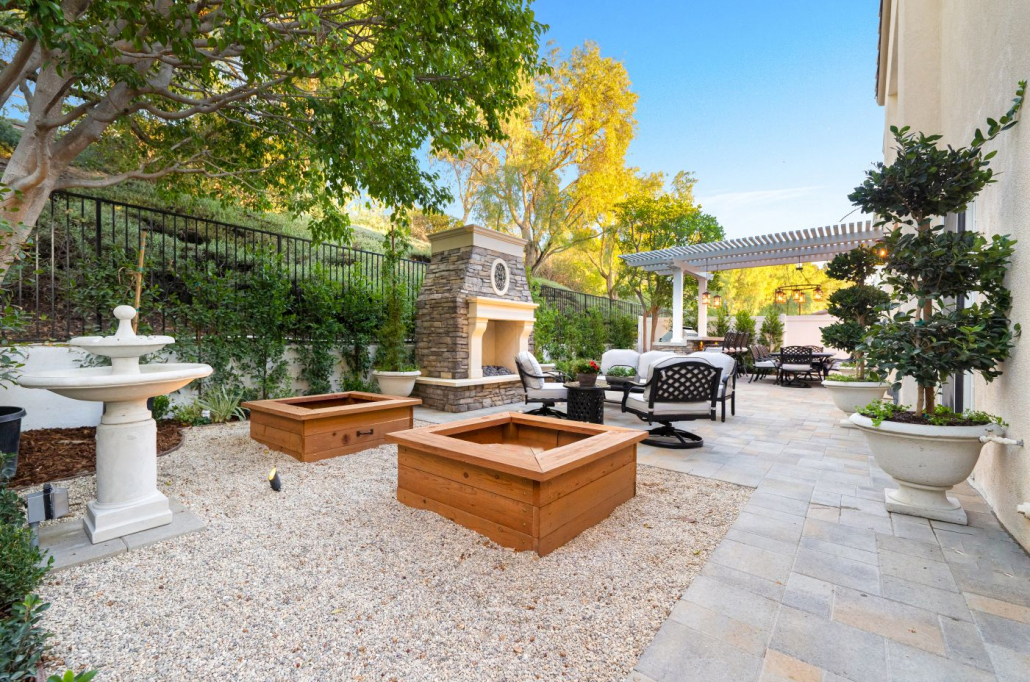
If you're looking to add some outdoor living space to your yard, a paver patio is a great option. But what if your yard has a slope? No need to worry—installing a paver patio on a slope is completely doable with the help of a reliable hardscapingHardscaping refers to the non-living elements of landscaping, such as stone, brick, concrete, wood, ... contractor.
It just requires a bit more planning and preparation. In this guide, we'll take you through the steps of installing a paver patio on a slope, from choosing the right materials to ensuring proper drainage.
With the help of this guide and the right tools and materials, you'll be able to create a beautiful and functional outdoor space in no time.
Before installing a paver patio on a slope, it's crucial to determine the slope's grade. Start by driving wooden stakes into the ground at the top and bottom of the slope.
Tie a string lineA string line, or mason’s line, is a strong, thin cord used in masonry and landscaping to create s... between the two stakes to create a sightline that represents the slope's overall grade. Use a 4-foot levelA level is a tool used to determine whether a surface is horizontal (level) or vertical (plumb). It ... or a bubble level to check the slope's angle. A slight slope of 1% to 2% is ideal for proper drainage.
For steeper slopes, special consideration must be given to ensure a stable and safe patio surface.
When selecting pavers for a sloped patio, several factors must be considered to ensure that they can withstand the slope's angle and provide proper drainage. The type of pavers chosen should have a texture that provides slip resistance and stability, such as concrete paversConcrete pavers are precast, man-made paving stones made from a mixture of cement, sand, gravel, and....
In addition, the pavers should be installed on a base of gravelGravel consists of small, loose, rounded or angular stones, typically ranging in size from a few mil... and sandSand is a fine, granular material composed of finely divided rock and mineral particles. It is a fun... with edge restraintsEdge restraints are rigid barriers used to contain and support the edges of paving installations, su... to prevent shifting.
Polymeric sandPolymeric sand is a fine sand mixed with additives that bind the sand particles together, used in la... should be used as a joint-filling material to lock the pavers in place and prevent weed growth. Proper drainage and slope for the patio surface should also be factored in when selecting the appropriate pavers for the project.
When planning the layout of your sloped paver patio, there are a few things to keep in mind to ensure that your design is both functional and visually appealing.
The first step is to survey your yard and determine the size and shape of the patio you want to create. Consider how you want to use the space and any features you want to include, such as seating areas, fire pits, or built-in planters.
Next, use string lines and sight lines to map out the shape of the patio and ensure that it will be level and properly sloped for drainage. This is also a good time to consider the type of pavers you want to use and any patterns or designs you want to incorporate.
Once you have a solid plan in place, you can begin preparing the ground for the base layer.
Proper preparation of the ground is crucial for building a stable and long-lasting paver patio on a slope. Before laying any pavers, you will need to remove any grass, weeds, or debris from the area and mark any utility lines to avoid damaging them during the installation process. Next, excavate the area to the proper depth, ensuring that the slope is consistent and slopes away from any nearby structures or buildings.
Once the ground has been properly excavated, it's time to install the base layer. This typically includes a layer of gravel followed by a layer of sand, which should be compacted with a plate compactor to create a solid foundation for the pavers.
Be sure to take into account the slope of the ground and adjust the base layer accordingly to ensure a level and stable surface for the pavers.
The base layer is the foundation of your paver patio, and it's important to ensure that it is properly installed for a stable and long-lasting surface. When building a paver patio on a slope, it's especially important to take into account the angle of the slope and adjust the base layer accordingly.
Start by laying a layer of landscape fabricLandscape fabric is a woven or non-woven material used in landscaping to control weeds and stabilize... over the excavated ground to prevent weeds from growing through the base layer. Next, add a layer of gravel to a depth of around 4 inches, ensuring that the slope is consistent and slopes away from any nearby structures or buildings. Use a plate compactor to compact the gravel layer and create a solid base.
Once the gravel layer is in place, add a layer of sand to a depth of around 1 inch, again taking into account the slope of the ground and adjusting the sand layer as necessary. Use a straight edge and a 4-foot level to ensure that the sand layer is level and slopes away from any nearby structures or buildings.
Finally, use a plate compactor to compact the sand layer and create a smooth surface for laying the pavers.
Laying pavers on a slope requires careful attention to detail to ensure the final product is level and stable. Here are the steps to successfully install pavers on a slope:
A properly installed sloped paver patio should have proper drainage to prevent water damage. Here are some solutions to ensure water flows away from the patio:
Regular maintenance is crucial for ensuring the long-term durability and beauty of your sloped paver patio. Here are some tips to keep in mind:
By following these maintenance tips, your sloped paver patio will remain beautiful and functional for years to come.
Looking to install a paver patio on a slope but feeling overwhelmed? Let West Hills Masonry help!
Our experienced team can handle your paver patio installation from start to finish, ensuring a beautiful and durable finished product that will last for years to come.
To learn more about our services and schedule a consultation with our reliable hardscaping contractor, contact us at 714-519-5009 at West Hills Masonry today!
 Carlos Gonzales
Carlos GonzalesLocations We Serve
Schedule A Consultation